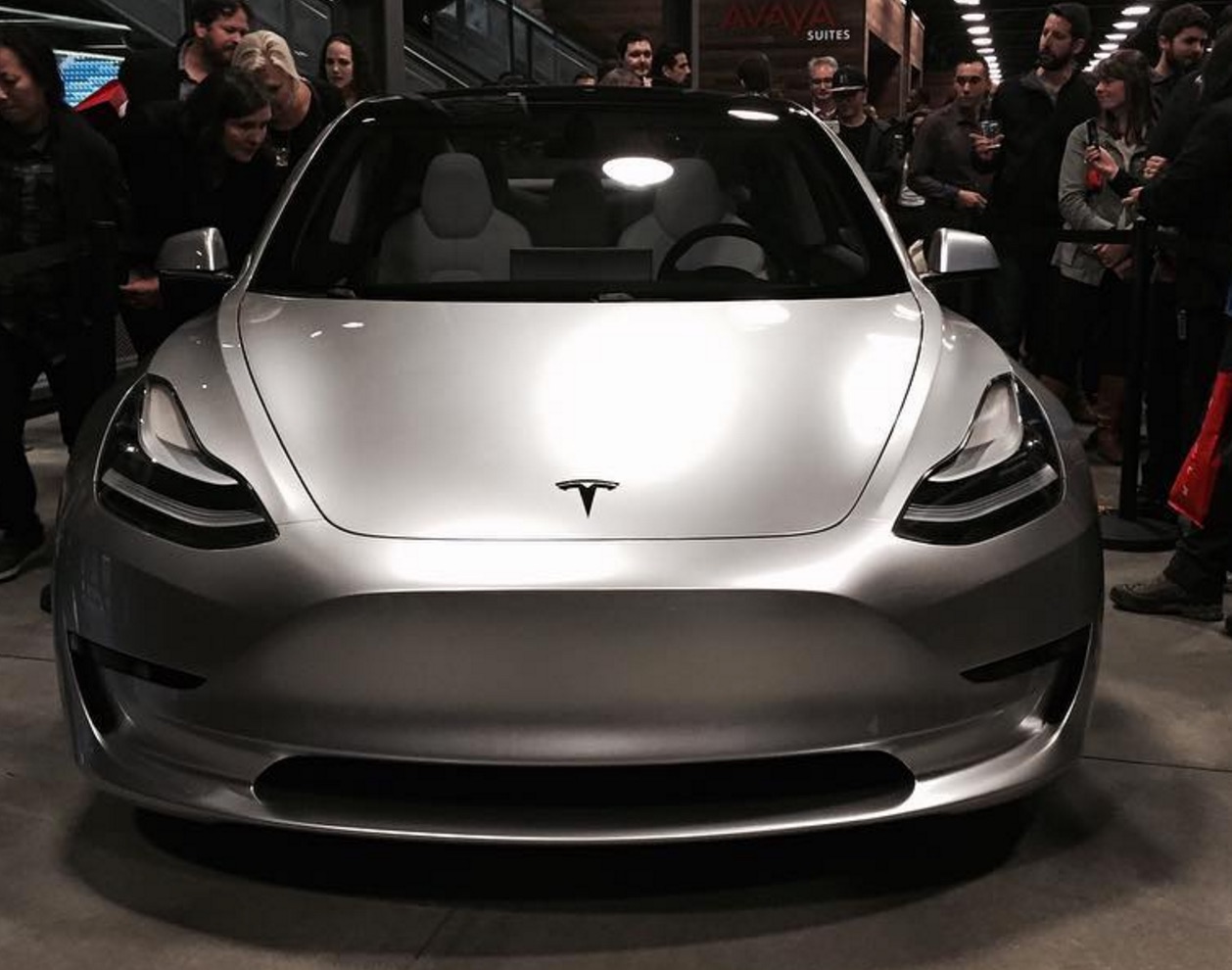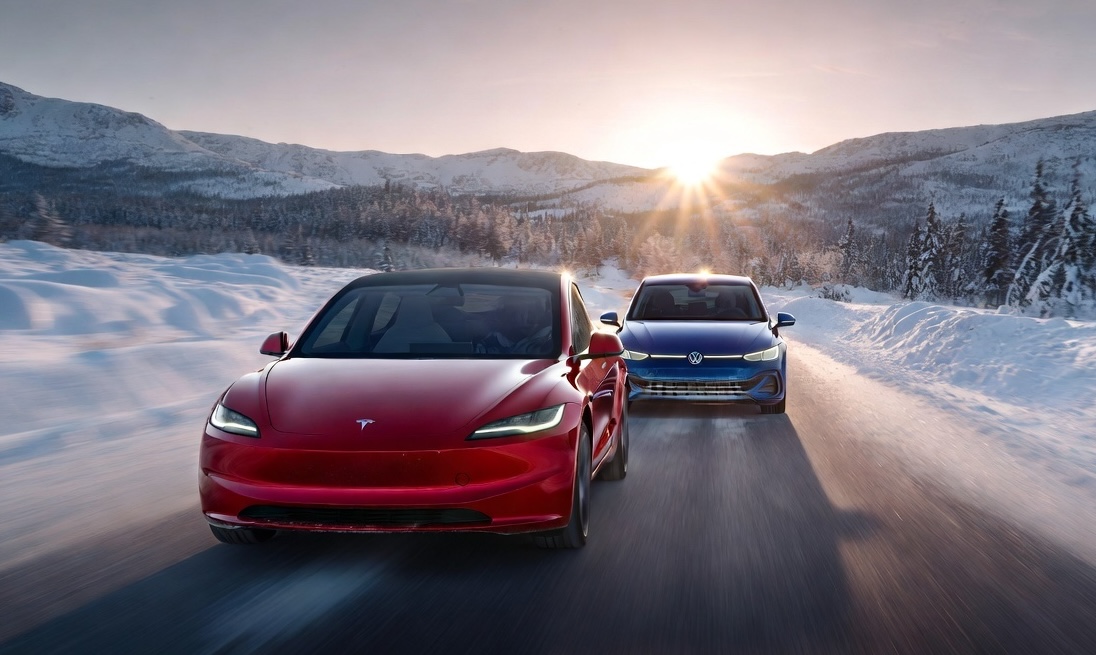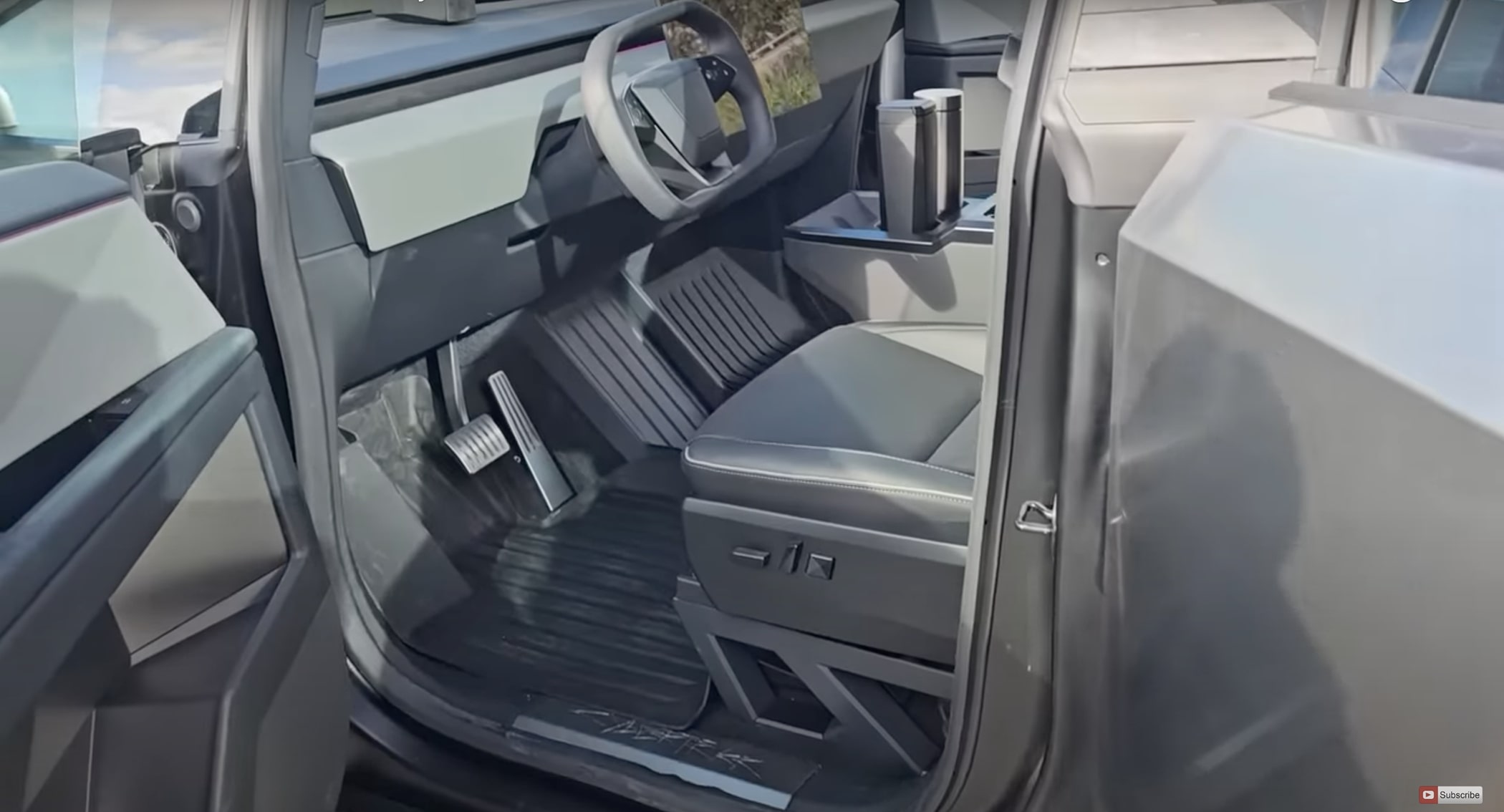News
Tesla’s Model 3 will be big news in 2017 and why you should care

The Tesla Model 3 will reach a pinnacle of excitement and hype in 2017, with projected international pricing and production scheduled to begin mid-year. These are important times for Tesla, as the Model 3 is the vehicle that CEO Elon Musk envisioned with his original Master Plan.
A new audience for Tesla
A minimum of 215 miles of range per single charge. Under 6 seconds: Zero to 60 mph. Seating for 5 adults. Designed to achieve 5-star safety rating. Autopilot hardware. Supercharging capable. Musk has said that “you will not be able to buy a better car for $35,000,” while also indicating that options will bring the typical price of a Model 3 to about $42,000.
All indications are that the Model 3 will be a four-door sedan that’s a bit smaller than the Tesla Model S. Likely comparable cars are the BMW 3 Series, Jaguar XE, and Mercedes C-Class. Those models are no mid-range Hondas or Hyundais, no Nissan Versas or Chevy Sparks with base prices under $15,000. So the Model 3 will have an upscale audience but not the mass public— at least not yet.
So, yes, it’s nice to see another Tesla vehicle coming to market, but aside of that, what’s so significant about the Model 3?
The Tesla Master Plan as embodied in the Model 3
Over a decade ago, Musk announced that Tesla’s long term plan was to build a wide range of vehicles, including affordably priced family cars. This was part of a larger goal to help expedite the move from a “mine-and-burn hydrocarbon economy towards a solar electric economy.” Most electricity is produced at an electric power plant where some fuel source, such as coal, oil, natural gas, or nuclear energy, produces heat that boils water to create steam. The steam, under high pressure, is used to spin a turbine. Centralized electricity, then, frequently perpetuates reliance on fossil fuels. Recent anthropogenic emissions of greenhouse gases from fossil fuels are the highest in history, and climate changes have had widespread impacts on human and natural systems. When we reduce our reliance on fossil-fuels, we can decrease the proportion of greenhouse gases in the atmosphere. Human activity, after all, has contributed to anthropogenic climate change.
What’s the Model 3 got to do with all this?
The important distinction to note here is between electric vehicles powered from a centralized grid and electric vehicles powered by decentralized solar energy. When combined with a modestly sized and priced solar panel from SolarCity — the Tesla-owned solar service provider — a Model 3 consumer can draw upon decentralized energy. When energy is produced close to where it will be used, rather than at a large plant elsewhere and sent through the national grid, a Tesla consumer reduces carbon emissions and contributes to a greener climate and economy.
The Model 3 will bring the capacity to become relatively energy independent to a whole new segment of society. Tesla’s reconceptualization of a transportation and electricity generation linkage will become increasingly apparent and important in 2017 as the Model 3 comes closer to our city streets.
The triad of Model 3 electric vehicle, solar roof, and Powerwall 2
In addition to ramping up Model 3 production, Tesla’s engineering teams will work in conjunction with Panasonic to set manufacturing at SolarCity’s Buffalo plant in 2017. That is the starting point for SolarCity solar roof products. The result? Solar cells, solar modules, and solar roof tiles.
Here’s how it works. A residence can capture the sun’s free, abundant energy source through rooftop solar tiles, turning sunlight into electricity for immediate use. Tesla’s solar roof tiles will be designed in four different and very appealing styles. Once the Jones family gets these solar roof tiles, so, too, will the Smiths want them. You see where this is going…
And there’s more to the solar roof tiles than merely converting sunlight. That sunlight-turned-electricity can be stored in a Powerwall 2 home battery pack. In early 2017, Tesla will initiate the first deliveries and installations of the Powerwall 2, which is being produced at the Gigafactory in Nevada. The Powerwall 2 can power an average two-bedroom home for a full day.
It can also be used to fire up your Model 3.
So, let’s review. Solar produces zero carbon emissions and reduces dependence on fossil fuels. The Model 3 electric vehicle is priced to meet the needs of an entirely new market. That market will be able to use solar roof tiles to turn sunlight into electricity, and the Powerwall 2 will store electricity that can, in turn, power up the Model 3. By matching Tesla solar roof tiles with the Powerwall to power your Model 3, you can extend the environmental and cost benefits of solar energy.
This is big stuff, and it’s clearly been under-reported. The Model 3 has the capacity to have huge consequences on the way the typical U.S. consumer considers electricity generation and transportation alternative. It’s Tesla in the lead, all over again.

News
Tesla breaks Norway’s all-time annual sales record with one month to spare
With November alone delivering 4,260 new registrations, Tesla has cemented its most dominant year ever in one of Europe’s most mature EV markets.

Tesla shattered Norway’s decade-old annual sales record this month, overtaking Volkswagen’s long-standing milestone with over one month still left in the year. Backed by surging demand ahead of Norway’s upcoming VAT changes, Tesla has already registered 26,666 vehicles year-to-date, surpassing Volkswagen’s 2016 record of 26,572 units.
With November alone delivering 4,260 new registrations month-to-date, Tesla has cemented its most dominant year ever in one of Europe’s most mature EV markets.
Model Y drives historic surge in Norway
Tesla’s impressive momentum has been led overwhelmingly by the Model Y, which accounted for 21,517 of Norway’s registrations this year, as noted in a CarUp report, citing data from Elbil Statistik. The Model 3 followed with 5,087 units, while the Model S and Model X contributed 30 and 19 vehicles, respectively. Even the parallel-imported Cybertruck made the charts with 13 registrations.
Demand intensified sharply through autumn as Norwegian buyers rushed to secure deliveries before the country’s VAT changes take effect in January. The new regulation is expected to add roughly NOK 50,000 to the price of a Model Y, prompting a wave of early purchases that helped lift Tesla beyond the previous all-time record well before year-end.
With December still ahead, Tesla is positioned to extend its historic lead further. Needless to say, it appears that Norway will prove to be one of Tesla’s strongest markets in Europe.
FSD could be a notable demand driver in 2026
What’s especially interesting about Tesla’s feat in Norway is that the company’s biggest selling point today, Full Self-Driving (Supervised), is not yet available there. Tesla, however, recently noted in a post on X that the Dutch regulator RDW has reportedly committed to issuing a Netherlands national approval for FSD (Supervised) in February 2026.
The RDW posted a response to Tesla’s post, clarifying the February 2026 target but stating that FSD’s approval is not assured yet. “The RDW has drawn up a schedule with Tesla in which Tesla is expected to be able to demonstrate that FSD Supervised meets the requirements in February 2026. RDW and Tesla know what efforts need to be made to make a decision on this in February. Whether the schedule will be met remains to be seen in the coming period,” the RDW wrote in a post on its official wesbite.
If FSD (Supervised) does get approved next year, Tesla’s vehicles could gain a notable advantage over competitors, as they would be the only vehicles on the market capable of driving themselves on both inner-city streets and highways with practically no driver input.
News
Tesla Full Self-Driving v14.2’s best new feature is not what you think

Tesla Full Self-Driving v14.2 rolled out late last week to Early Access Program (EAP) members, but its best feature is not what you think.
While Tesla has done a great job of refining the performance of the Full Self-Driving suite with the latest update, there are some other interesting additions, including one that many owners have requested for some time.
Upon the release of v14.2, many owners recognized the Blue Dot next to the Autopilot tab in Vehicle Settings, notifying them of a new feature. What was included as a new feature in the new update was a Full Self-Driving stats feature, which now will show you how many miles you’ve traveled in total, and how many of those miles were driven using FSD:
🚨 The coolest non-driving change of Tesla Full Self-Driving v14.2 pic.twitter.com/HOJcFaV2Ny
— TESLARATI (@Teslarati) November 21, 2025
The feature seems to be more of a bragging rights thing than anything, but it will also give drivers a good idea of how many miles they are using Full Self-Driving for. Those who use telematics-based insurance services will also be able to run experiments of their own, and could determine whether their premiums are impacted by the use of Full Self-Driving, and whether it is more advantageous to use over manual driving.
Tesla rolled out numerous other improvements with Tesla Full Self-Driving v14.2, most notably, the company seems to have resolved previous complaints about brake stabbing and hesitation. This was a major complaint in v14.1, but Tesla has seemed to resolve it with this newest branch of the FSD suite.
There were also improvements in overall operation, and it was notably smoother than past versions. Speed Profiles are seemingly refined as well, as they seem much more fixed on how fast they will travel and how aggressive they will be with things like passing cars on freeways and lane changes.
In future updates, Tesla plans to add Parking Spot selection, along with overall operational improvements. However, CEO Elon Musk recently said that the next branch, Full Self-Driving v14.3, will be where the “final piece of the puzzle is placed.” Tesla believes it is close to solving autonomy, so v14.3 could be a major jump forward, but it remains to be seen.
News
Tesla adjusts crucial feature as winter weather arrives

Tesla has adjusted the functionality of a crucial climate feature as Winter weather has started to arrive throughout some parts of the United States. The new feature was highly requested by owners.
Tesla has a Cabin Overheat Protection feature that helps keep the temperature regulated if it reaches a certain threshold. Inversely, it can be used in cold weather as well, which will automatically warm the cabin if it sinks to a temperature that is too low for the owner’s comfort.
This is a great way to keep the cabin either warmed up just enough or cooled down just enough so that it never gets too hot or too cold. Extreme temperatures could damage certain parts of the vehicle or damage personal belongings that are kept inside the car.
Overheat protection is a great thing to have in hot climates like Arizona or Texas, especially with the Premium trims of the Model 3 and Model Y, which feature a glass roof.
Many owners appreciate the feature, but they argue that using it at home will utilize too much energy, especially during extreme temperatures. For a while, many Tesla fans have requested an option to disable this feature when the car is parked at home, which the company recently added, according to Not a Tesla App.
The feature is part of Software Version 2025.44.3, and the release notes state:
“You can now choose Exclude Home when Cabin Overheat Protection or No A/C is enabled.”
Tesla has been great at listening to what owners want with new features, and this is one that will reserve some charge and prevent unnecessary utilization of available power, especially as the car is parked at home. If owners want to condition the cabin or get the car ready for operation with a comfortable interior, they can utilize the Tesla app to adjust the climate.








